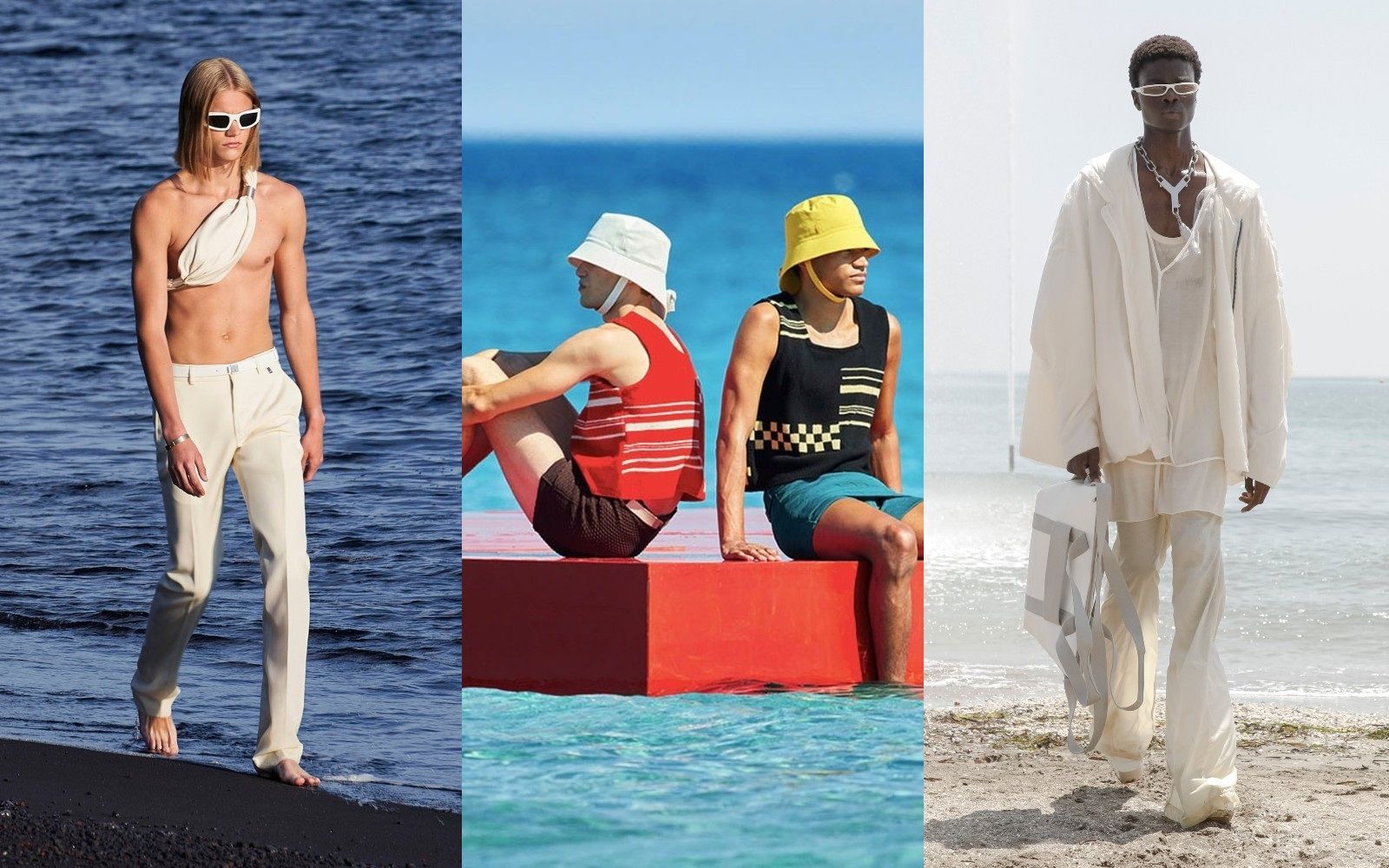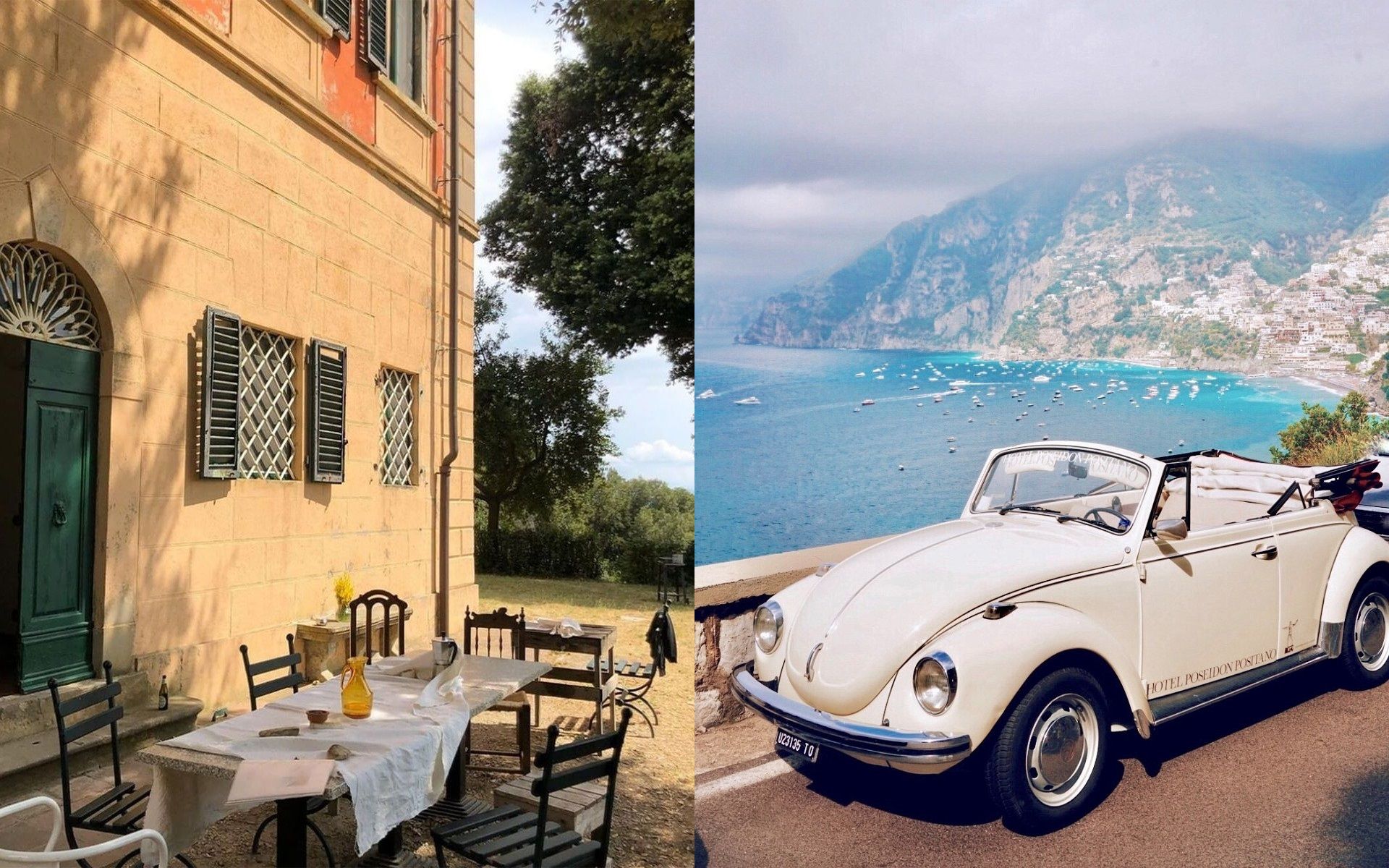
How "Ripley" upends the aesthetics of La Dolce Vita Still the 1960s, still Italy but in a neo-noir key
For years, photos from the set of The Talented Mr. Ripley by Anthony Minghella and Plein Soleil by René Clement have circulated on Instagram moodboards. Both films (one from the '60s and the other from '99) chose to tell the story of one of the most fascinating characters in 20th-century literature, Tom Ripley, through the idyllic beauty of post-war Italy: think of the beaches of the Amalfi Coast, Vespa rides through the streets of Rome and Naples, terraces overlooking the sea, and the preppy attire of wealthy Americans on perpetual vacation. An Mediterranean aesthetic portrayed so well by the first two legendary film adaptations that Steven Zaillian's new project for Netflix, the series Ripley, starring the spectacular Andrew Scott, couldn't replicate. So, the strategy was entirely different: why not make the story the dark neo-noir that it truly is, instead of focusing on the postcard beauty? The reversal effect is startling: while preserving all the beauty of Atrani (and other locations like Naples, Rome, but also the stunning villa of Dickie Greenleaf, which is actually located in Capri), the decision to turn the entire show into black and white effectively captures Ripley's perspective, where Italy represents not only the dream of a better life but also the stage for frauds and murders, almost a shadowy and twisted mirror of his own mind.
@diogenesverlag Am 4. April 2024 feiert ›Ripley‹ auf Netflix Premiere, basierend auf dem berühmten Roman ›Der talentierte Mr. Ripley‹ von Patricia Highsmith Die achtteilige Serie mit Andrew Scott (›Fleabag‹, ›All of Us Strangers‹) in der Hauptrolle wurde von Steven Zaillian ( ›Hannibal‹, ›Schindlers Liste‹, ›The Night Of‹) geschrieben und inszeniert und von Philipp Keel (Diogenes Entertainment) als Executive Producer begleitet. Am 20. März 2024 erscheint die exklusive Neuauflage des Romans ›Der talentierte Mr. Ripley‹. diolink.ch/netflixripley #ripley #netflix #patriciahighsmith #diogenesverlag #booktok #booktokgermany Originalton - Diogenes Verlag
The most beautiful part is that, following the success of Cortellesi's film phenomenon There's Still Tomorrow, set in the 1950s, Ripley seems to be inspired not only by classic American noirs but also by the neorealist films produced in that era. The final effect is to depict a kind of photographic negative of the classic Dolce Vita, which partly or entirely reverses the new stereotype dominating much of recent American audiovisual production with its obsession with Italy and Italian stories. From Call Me By Your Name, through The White Lotus, to far less exciting films like Omen – The Dawn of Prophecy, Book Club: The Next Chapter, The Equalizer 3, A Haunting in Venice, Mafia Mom, Fast X, Mission: Impossible, Ferrari, any James Bond with Craig, House of Gucci, and so on, American cinema seems to be fixated on Italy, especially the South. Beyond the geographic beauty, the reason is probably economic, as stated directly from the official Cinecittà website: "Law 220 of November 14, 2016, 'Regulation of cinema and audiovisual,' has made the tax credit tool much more functional for national and international productions, which can now take advantage of considerable tax benefits by choosing to shoot their film in Italy," and essentially anyone shooting in Italy can deduct 40% of production expenses from taxes on the footage produced in Italy. This has certainly led to an increase in content shot in the country, garnering a lot of publicity, but it has also led American filmmakers to fixate on one way of portraying our country: that of the Dolce Vita, with warm colors, dreamy beaches, historic villages where life is lived as it once was, and all that nostalgic vibe of Slow Living style.
Ripley is the most beautiful show Netflix has ever made, it’s just shots of Andrew Scott pic.twitter.com/MfmRGNgZyv
— Melancolin (@colincvs) April 5, 2024
Now, Ripley's exceptional perspective obtained simply by choosing to observe these beautiful landscapes in black and white not only turns historic villages and alleys into a vaguely disturbing, alien, labyrinthine environment - but also restores that sense of harshness, decay, and radical backwardness to Italy in those years, an almost barbaric place compared to the United States untouched by war. Moreover, the choice of black and white paradoxically aligns even better with the aesthetic tone of Fellini's Dolce Vita, a film that didn't idealize Italy but instead wanted to portray its many glaring contradictions, but whose title came to identify the optimism devoid of shadows that swept the country during the economic boom and Technicolor era. Certainly, Ripley does not lack idealizations: by moving the story's timeline forward from 1955 to 1961, Zaillian allows Ripley to witness a performance by Mina singing The Sky in a Room in Naples - perhaps the only "Americanization" of the series, given the complete implausibility of a Mina concert in broad daylight on the streets of Naples and the scarcity of lip-sync. But it's a flight of fancy we can grant. And even though it remains to be seen whether Ripley will achieve the stratospheric success of other Netflix productions (black and white is still a hurdle for many viewers), it must be acknowledged not only for being an almost too faithful adaptation of the book, except for the somewhat unrealistic casting of a minor character that slightly breaks the suspension of disbelief, but also for finally raising the question that there are indeed other ways to tell Italy's story, and especially to use its scenarios as a springboard for personal expression rather than as a great leveler that flattens everything to the two-dimensionality of a postcard.















































